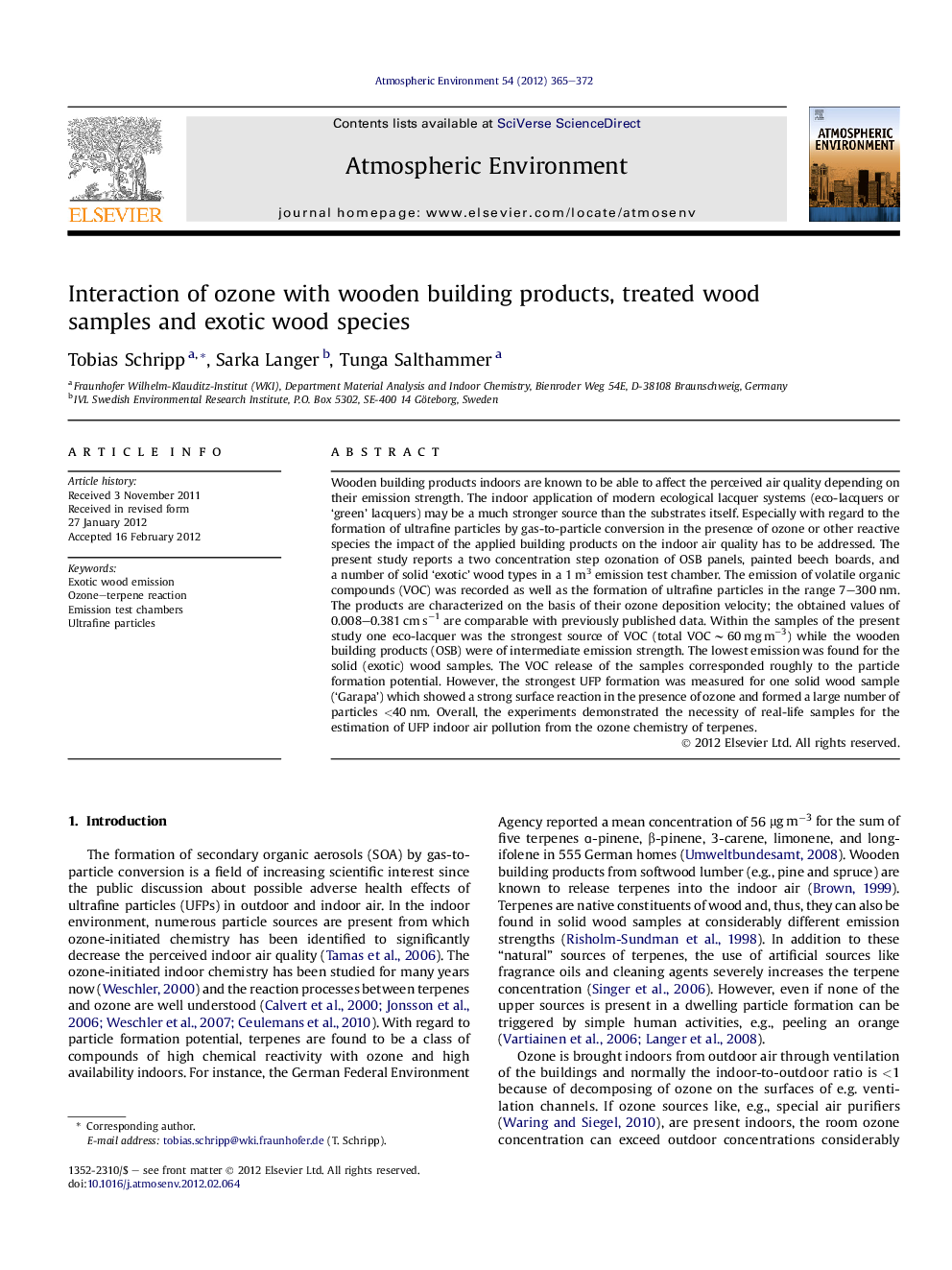| کد مقاله | کد نشریه | سال انتشار | مقاله انگلیسی | نسخه تمام متن |
|---|---|---|---|---|
| 4438807 | 1620417 | 2012 | 8 صفحه PDF | دانلود رایگان |

Wooden building products indoors are known to be able to affect the perceived air quality depending on their emission strength. The indoor application of modern ecological lacquer systems (eco-lacquers or ‘green’ lacquers) may be a much stronger source than the substrates itself. Especially with regard to the formation of ultrafine particles by gas-to-particle conversion in the presence of ozone or other reactive species the impact of the applied building products on the indoor air quality has to be addressed. The present study reports a two concentration step ozonation of OSB panels, painted beech boards, and a number of solid ‘exotic’ wood types in a 1 m³ emission test chamber. The emission of volatile organic compounds (VOC) was recorded as well as the formation of ultrafine particles in the range 7–300 nm. The products are characterized on the basis of their ozone deposition velocity; the obtained values of 0.008–0.381 cm s−1 are comparable with previously published data. Within the samples of the present study one eco-lacquer was the strongest source of VOC (total VOC ∼ 60 mg m−3) while the wooden building products (OSB) were of intermediate emission strength. The lowest emission was found for the solid (exotic) wood samples. The VOC release of the samples corresponded roughly to the particle formation potential. However, the strongest UFP formation was measured for one solid wood sample (‘Garapa’) which showed a strong surface reaction in the presence of ozone and formed a large number of particles <40 nm. Overall, the experiments demonstrated the necessity of real-life samples for the estimation of UFP indoor air pollution from the ozone chemistry of terpenes.
► We measured the VOC emission from several wood species in a test chamber.
► Solid wood species were found to be weak emission sources compared to wood products.
► When adding ozone we characterized formation of particles and ozone deposition velocity.
► The application of ‘green’ lacquers increased VOC emission and particle formation.
Journal: Atmospheric Environment - Volume 54, July 2012, Pages 365–372